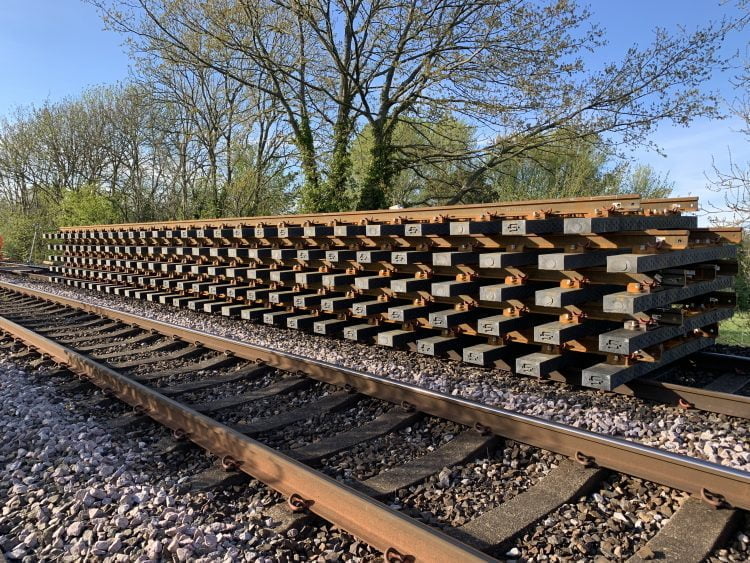Network Rail has introduced the first composite railway sleepers on mainline tracks in Wiltshire.
The environmentally friendly sleepers are made from recycled tops of old bottles, food packaging and unwanted plastics and have been installed across the weight restricted Sherrington Viaduct which is situated between Salisbury and Warminster.
Without this technology, wooden sleepers would have to be fitted as concrete sleepers would be too heavy for the viaduct. Sleepers sit on ballast which holds the rails up and maintaining the correct track distance.
An EU-wide creosote ban in 2013 had an exemption for railway sleepers until 31 July this year. Softwood sleepers will no longer be used in this country from that date. Hardwood sleepers – the alternative – are mainly sourced from Brazil and are not sustainable.

Network Rail will be on track to achieve its Zero Carbon 2050 target because of the minimum 40% reduction in greenhouse gas emissions from the sleeper manufacture, it is also expected that the recycled sleepers will last for at least 50 years which is an increase in service life compared with the timber alternative which will reduce costs and risks to maintenance staff working on site.
Plastic sleepers have been used on narrow gauge railways, including the Ffestiniog & Welsh Highland for a number of years.
Traditional wooden sleepers can split, rot and degrade over time whilst the composite sleepers don't and they are also resistant to water, oil, chemical and fungi. The cutting edge sleepers also can be reused or recycled to make new sleepers or composite products when they are eventually replaced.
Rail Minister Chris Heaton-Harris said: “I am proud to see such a positive innovation being used for the first time on the mainline railway.
“Not only are these sleepers made from locally sourced plastic waste, but they also need less maintenance and will last longer, underlining our commitment to creating a greener, cleaner and more efficient rail network.”
Network Rail's Wessex route director, Mark Killick, said: “This is an exciting development; use of these recycled sleepers on the Network Rail Wessex route is a first for the overground railway network in Britain.
“Rail is already one of the greenest ways to travel, but we're committed to even greener and better journeys whether this is changing how we maintain the lineside or finding innovative ways to improve the railway by reusing materials and reducing landfill.
“By using these sleepers, not only are we upgrading the track for customers, they will be travelling on a railway laid using sustainable materials as part of the circular economy.”
Sicut's CEO, William Mainwaring said: “Sicut is delighted to have been selected by Network Rail as its sole supplier of composite railways sleepers and it was a great pleasure to work with the Wessex Route on the Sherrington Viaduct project. Having proven that our products meet the performance required of modern rail track infrastructure we look forward to working closely with every Network Rail Route and Region to deliver the commercial and environmental savings promised by our technology, while at the same time helping the UK deliver on its commitments on carbon reduction and plastic waste proliferation.”
Where Next?
RAILADVENT NEWS
The latest railway news
RailAdvent Plus
Discounts, videos, pictures and more!
FREE NEWSLETTERS
Signup to our daily and weekly newsletters
RAILADVENT SHOP
Railway Prints, DVD's / Blu-Ray's, books and more
LOCOSTOP COMMUNITY
Come and share your railway pictures
UK STEAM INFO
Upcoming mainline steam tours/loco movements
NETWORK RAIL
Visit their website
Recycled railway sleepers is the best thing I have ever heard. And that’s why that more railway sleepers should be replaced by these recycled plastic material that can last lot longer. As plastic is a hard material to dissolve and is very bad for the environment.